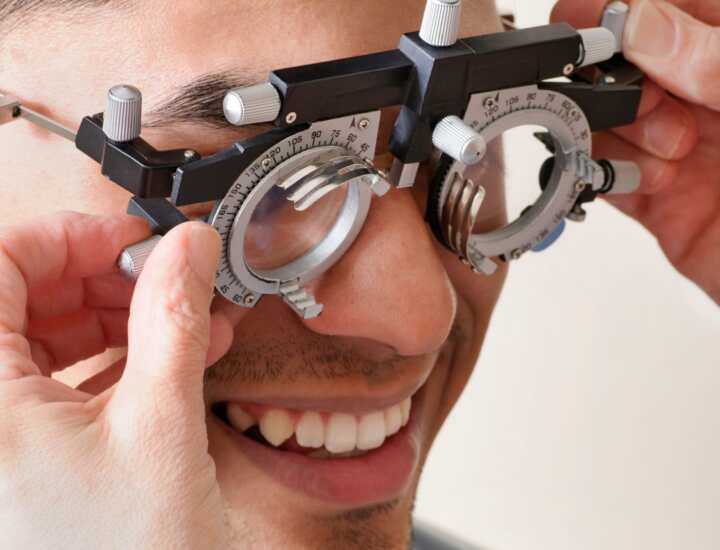Leber hereditary optic neuropathy (LHON) is an inherited retinal disease (IRD) that leads to sudden vision loss during young adult life.
LHON is a disorder caused by mutations in the genetic code of mitochondria, which are small sub-units that reside within the cell.
- Mitochondria are also known as the “powerhouses of the cell” as they constantly convert energy locked in our food, into energy that the cell can use.
- Our eyes are our most energy-hungry organs. This means that if the mitochondria are not working properly, such as in LHON, the subsequent lack of energy production can lead to the death of retinal ganglion cells (RGCs), which are the nerve cells that communicate visual information to the brain.
- Loss of these cells leads to subsequent degeneration of the optic nerve and visual loss.

Loss of vision due to LHON does not cause any eye pain, but it is quite an alarming experience as the loss of central vision presents suddenly and can progress quite quickly, leaving only peripheral vision. This means that the majority of people with LHON retain independent mobility but cannot focus on anything straight ahead or see fine detail.
It is worth noting that a significant percentage of people who possess a gene mutation that causes LHON do not develop any features of the disorder. Recent Australian research showed that in a cohort of people with a known LHON gene mutation, only 17.5% of males and 5.4% of females experienced vision loss. 1
What are the symptoms of Leber hereditary optic neuropathy?
The onset of Leber hereditary optic neuropathy (LHON) is acute, with patients developing blurred central vision very quickly. These vision problems may begin in one eye, or both simultaneously. If one eye is affected, then similar symptoms appear in the other eye on average eight weeks later.
Over time, the vision in both eyes typically worsens, affecting central and colour vision. In a small percentage of cases, the central vision loss can improve; but in most cases loss of vision is permanent. The severity of symptoms may vary from one affected individual to another, even within the same family, due to a ‘dosage’ effect. This is due to the fact that we have many mitochondria in each cell. In one individual, if only a small proportion of mitochondria in each cell have the mutation, symptoms will be mild. In another individual, if a higher proportion of mitochondria in each cell carry the mutation, symptoms will be more severe.
Australian research has also shown that 20 to 30% of people with LHON also show hearing problems. 2
What is the cause of LHON and how is it inherited?
LHON is a very rare condition. It is thought to affect between one in 30,000 to one in 50,000 individuals worldwide, with a minimum prevalence of 1 in 68,000 recently reported in Australia. 3 Research has revealed that three mutations in mitochondrial genes account for between 85% – 90% of cases of LHON.
LHON follows a mitochondrial pattern of inheritance, which is also known as maternal inheritance. Only egg cells (from the mother) and not sperm cells (from the father) contribute mitochondria to a developing embryo, therefore only females can pass mitochondrial conditions to their children. Fathers affected by LHON or carrying LHON mutations do not pass the condition to their children. Often, people who develop LHON have no family history of the condition. However, it is currently impossible to predict which members of a family who carry a mutation will eventually develop vision loss.
What treatments are available?
There is one drug approved for use in people LHON – an antioxidant called idebenone or Raxone® . In LHON, people present with sudden vision loss and the use of oral idebenone 900 mg/day for 24 weeks has been shown to have persistent beneficial effects in preventing further vision impairment and promoting vision recovery. 4 Idebenone has received regulatory approval in Europe and Israel but is not available in Australia.
There is strong evidence that environmental factors such as smoking and excessive alcohol consumption are linked to why some susceptible people develop the condition, and others do not. 5 Therefore, a healthy lifestyle should be adopted by those at risk.
A number of new therapies are also in development for the treatment of LHON, including pharmaceutical compounds and gene therapies.
A LHON patient registry is underway in Australia, led by Professor David Mackey, Dr Sandra Staffieri, Ms Lisa Kearns and Dr Isabel Lopez Sanchez.
